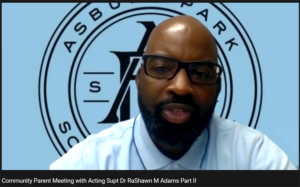We’re very comfortable with our opposition to [Race To The Top]. We think (U.S. Secretary of Education) Arne Duncan’s vision of how to increase student achievement is very, very misinformed.
That’s Steve Wollmer, NJEA’s chief spokeman, explaining why NJEA officials are shedding no tears over NJ’s loss of $200-$400 million in federal aid for education. The union has made its reasons clear: it sees no link between student achievement and teacher quality, views merit pay as a “destructive force,” objects to RTTT’s focus on charter school expansion, and perceives no value in a sudden cash infusion of federal funds. This platform puts NJEA officials squarely in opposition to the wealth of data and research that continues to support the value of an education reform platform, particularly for our poorest and most vulnerable students.
Actually, the reasons may be immaterial. NJ never had a chance in this competition, not with only 21 out of 591 local affiliates signing on to the RTTT application. In addition, our milque toast petition attracted sign-offs from only about half of our school boards, an astoundingly low number given the fiscal morass of local districts. Kevin Huffman in the Washington Post looked over the 40 state applications and concluded that NJ’s was an example of “sham reform.”
The Garden State promises it will adopt new standards for students, change its data systems, provide teachers with computers for to-be-determined activities and convene a commission to devise a new teacher evaluation system.
But beyond all the promises, predicated on various commissions and boards miraculously completing complex political activities, there is little chance of reform trickling down to schools. The state asked school districts to sign on, but it gave them the option of signing on only to the pieces they liked. As a result, school district commitments to enact reform are a hodgepodge of assorted activities.
I’m picking on New Jersey not because it has the worst plan (it doesn’t) but because it so perfectly embodies the old way of applying for federal education funding — lots of promises and ideas; little chance of change on the ground.
“Lots of promises and ideas; little chance of change on the ground.” Oof. The truth hurts.
So, how likely are we to get beyond sham reform between now and June (when the next round of applications is due)? It’s likely that Commissioner Schundler has the wherewithal to produce a meaty declaration of NJ’s intentions to improve data systems, expand school choice, and tie student achievement to teacher evaluations. It’s also likely that NJEA’s leadership will direct its local affiliates to refuse to participate in improving public education in NJ. In doing so, they will miss another opportunity to assuage public unrest at the union’s recalcitrance to embrace anything but a failing status quo.
If public perception plays any role in union politics (duh), then NJEA’s refusal to accept concessions on compensation, coupled with its decision to undermine our chances at federal stimulus money, is practically suicidal. How mad do they want people to get? Doesn’t it behoove the leadership of our 200,000 educators to cooperate in a grand venture that offers financial and academic rewards for our kids?
Deep breath. There are several reasons for our “sham reform” application’s failure, including unreasonably short deadlines for district and union approval, lack of information, and failure to achieve consensus. Our second chance in June presents an opportunity for NJEA’s execs to show NJ taxpayers that they are willing to work with a new administration. It also presents an opportunity for Gov. Christie’s administration to show that they’re serious about cooperation with diverse stakeholders. We’ve got three months to get it done.




